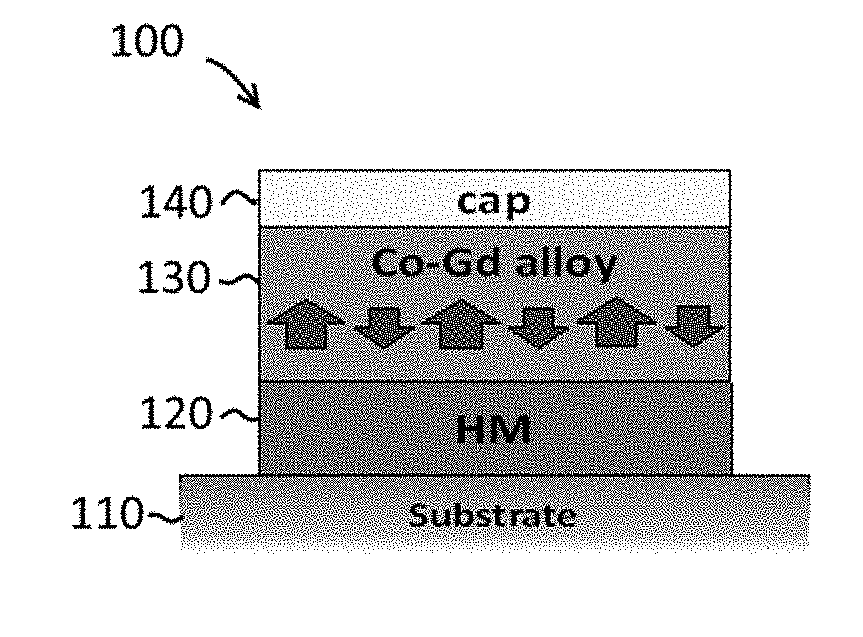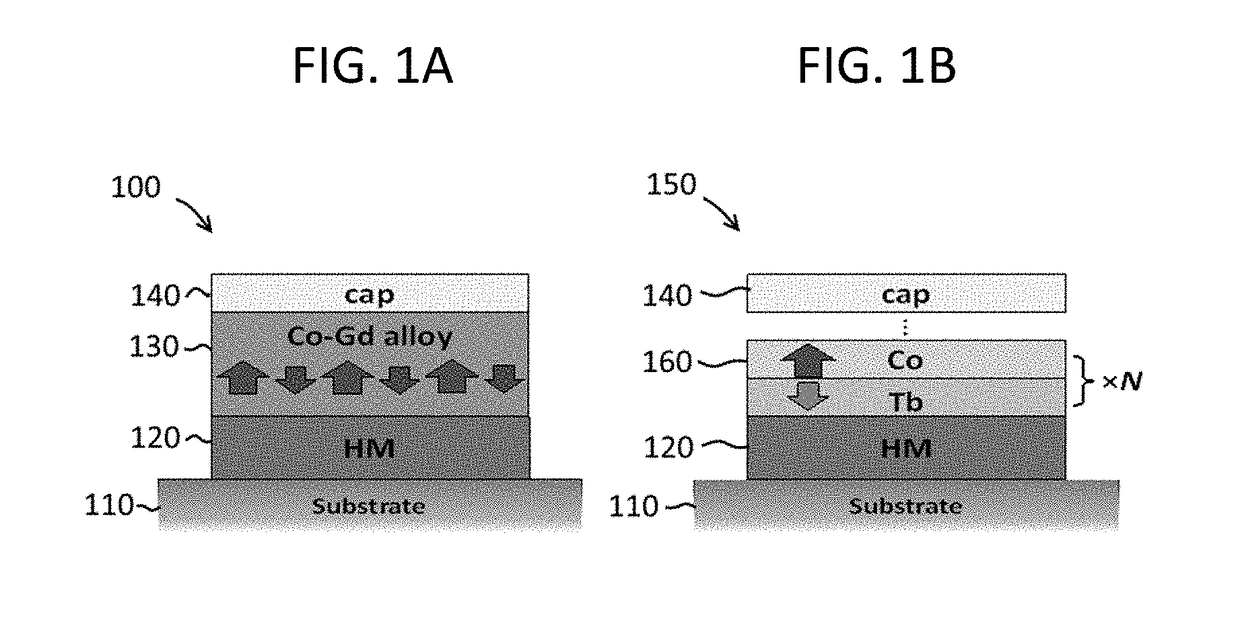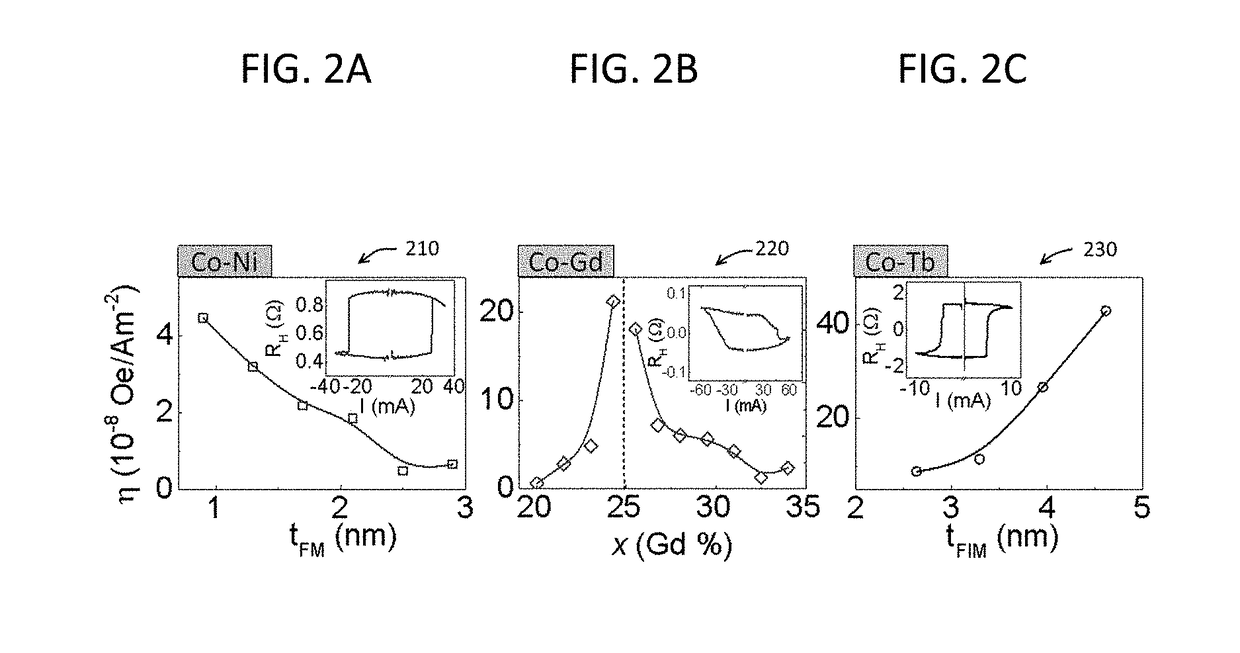High efficiency spin torque switching using a ferrimagnet
a high-efficiency, ferrimagnetic technology, applied in the direction of magneto-body, instrument, substrate/intermediate layer, etc., can solve the problems of insufficient thermal stability and external magnetic field resistance to make the resulting device viable, and the switching efficiency is still lower than desired, so as to improve external magnetic field resistance and switching efficiency, improve thermal stability, and reduce current switching
- Summary
- Abstract
- Description
- Claims
- Application Information
AI Technical Summary
Benefits of technology
Problems solved by technology
Method used
Image
Examples
Embodiment Construction
[0019]FIGS. 1A and 1B are diagrams of example spin torque devices that utilize a FIM layer 130, 160. In this and below examples, the spin torque devices take the form of SOT devices 100, 150, but it should be remembered that an FIM layer may alternatively be used in other types of spin torque devices, including STT devices. The first SOT device 100 includes a substrate 110 (e.g., thermally oxidized silicon), an HM layer 120 (e.g., 10 nm of Pt) that serves as a spin current source, a single FIM layer 130 (e.g., 6 nm thick Co—Gd alloy, for example, grown using a radio frequency (rf) and direct current (DC) magnetron sputtering system), and a capping layer 140 (e.g., of silicon oxide (SiO2)). The Co and Gd concentration in the layers may be in the range of Co83Gd17 to Co64Gd36. The second SOT device 150 includes a substrate 110, an HM layer 120 (e.g., 4 nm of Pt) that is serves as a spin current source, a multilayer FIM layer 160 (e.g., 0.34 nm of Tb and0.32 nm of Co as a bilayer pair,...
PUM
| Property | Measurement | Unit |
|---|---|---|
| thickness | aaaaa | aaaaa |
| thickness | aaaaa | aaaaa |
| thickness | aaaaa | aaaaa |
Abstract
Description
Claims
Application Information
 Login to View More
Login to View More - R&D
- Intellectual Property
- Life Sciences
- Materials
- Tech Scout
- Unparalleled Data Quality
- Higher Quality Content
- 60% Fewer Hallucinations
Browse by: Latest US Patents, China's latest patents, Technical Efficacy Thesaurus, Application Domain, Technology Topic, Popular Technical Reports.
© 2025 PatSnap. All rights reserved.Legal|Privacy policy|Modern Slavery Act Transparency Statement|Sitemap|About US| Contact US: help@patsnap.com



